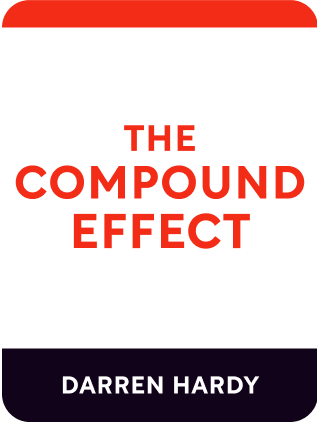

This article is an excerpt from the Shortform book guide to "The Compound Effect" by Darren Hardy. Shortform has the world's best summaries and analyses of books you should be reading.
Like this article? Sign up for a free trial here .
What is behavior momentum? What role does momentum play in habit formation?
Behavior momentum is a psychological metaphor based on the concept of momentum in physics. When you start practicing a new behavior, the progress is slow and the resistance is high. But when momentum kicks in, the new behavior becomes your second nature and it becomes easy to keep moving.
Here is how you can put behavior momentum to work for you to help you establish and stick to new habits.
What Is Behavior Momentum?
Behavior momentum (Hardy calls it “Big Mo”) is a powerful force for success. Momentum doesn’t come easily, but once it kicks in, your ability to achieve success compounds quickly.
The hardest part of achieving behavior momentum is getting started. Think about when you were a child playing on the playground merry-go-round. When it was full of kids and you tried to push it, it took a lot of effort and went very slowly. But as the speed picked up the merry-go-round would spin rapidly and you could hop back on and enjoy the ride. It’s the same with making any changes in your life; progress can be slow at first, but when momentum kicks in it’s easy to keep moving. You can put out less effort and receive greater results.
Putting Momentum to Work for You
Behavior momentum can work for good or bad. The Compound Effect is always at work, so a string of bad habits can build up momentum and send you into a chasm of bad luck with compounding negative side effects.
You gain positive behavior momentum by building up your efforts until you hit what’s commonly called “the zone” or “your groove.” Momentum kicks in when you:
- Make good choices that help you reach your goals and that align with your values.
- Engage in positive behaviors based on those good choices.
- Make those positive behaviors into habits of behavior and routine.
- Remain consistent with your new positive habits and routines.
Momentum at Work Example 1: Michael Phelps
Olympic champion swimmer Michael Phelps worked with his coach, Bob Bowman, over the course of 12 years. Their practice and preparation fell into routines, and Phelps’ performance became consistently excellent. By the time the Olympics rolled around, Phelps had caught momentum at the perfect time, and his performance was both amazing and predictable.
Momentum at Work Example 2: Apple
Apple Computer has been around a long time. Its Macs were always popular, but they had only a fraction of the market segment PCs had. When the company introduced the iPod in 2001, the device wasn’t the first MP3 player around. But Apple had consistency in its courting of customer loyalty and was consistently innovative with design, ease of use, advertising, and the “cool factor.” The iPod was a hit, but the company’s path toward positive revenue growth took a few years. They caught momentum in 2005 and gained 68 percent revenue growth.
Today, Apple dominates the smartphone market with its iPhone and has exploded into other areas such as digital music.
Why Routines Are Important to Momentum
When you have set a goal and created good new habits to support that goal, you must have daily, weekly, and monthly routines in place to reinforce your positive new direction. The greater your challenge, the more stringent your routine should be.
Think of new military recruits heading to boot camp. As soldiers, these recruits will have to be able to carry out their duties efficiently and reliably even under intense pressure and imminent danger. Because of this, boot camp instills rigorous routines for even minor tasks, such as standing at attention, making the bed, and shining shoes. In only 8-12 weeks, basic training turns young kids into confident soldiers through the power of routine.
Another example is famed golfer Jack Nicklaus, who was known for his pre-shot routine. To focus himself, he would go through a series of physical and mental steps—similar to a dance—before each shot. The timing of this routine never varied even by a second. In contrast, at the 1996 Masters, golfer Greg Norman’s pre-shot routine grew faster and faster each round; his consistency lost, he never gained momentum and his game collapsed.
You may not be a soldier or golfer, but predictable daily routines are vital to your success.

———End of Preview———
Like what you just read? Read the rest of the world's best book summary and analysis of Darren Hardy's "The Compound Effect" at Shortform .
Here's what you'll find in our full The Compound Effect summary :
- How small, daily actions can add up to big successes (or failures)
- Why it's easier to rely on the compound effect over time instead of taking big action all at once
- How it's possible to be better off starting with a penny than $3 million






